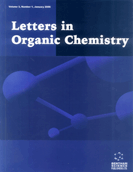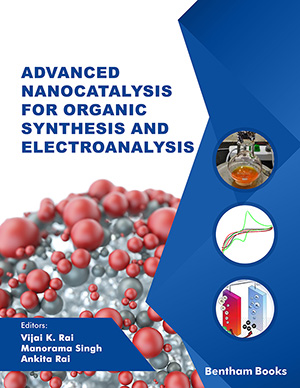Abstract
Multiple potential drugs have been developed based on the heterocyclic molecules for the treatment of different symptoms. Among the existing heterocyclic molecules, quinazoline and quinazolinone derivatives have been found to exhibit extensive pharmacological and biological characteristics. One significant property of these molecules is their potency as anti-tubercular agents. Thus, both quinazoline and quinazolinone derivatives are modified using different functional groups as substituents for investigating their anti-tubercular activities. We present a summary of the reported anti-tubercular drugs, designed using quinazoline and quinazolinone derivatives, in this review.
Keywords: Quinazoline, quinazolinone, anti-tubercular activity, SAR, heterocycles, drug.
[http://dx.doi.org/10.1021/acs.joc.6b02034] [PMID: 27680573]
[http://dx.doi.org/10.3390/molecules24213839] [PMID: 31731387]
[http://dx.doi.org/10.22270/jddt.v8i6-s.2156]
[PMID: 27051427]
[http://dx.doi.org/10.1016/j.ejmech.2014.08.034] [PMID: 25128670]
[http://dx.doi.org/10.3329/bjp.v11i3.25731]
[http://dx.doi.org/10.1016/j.ejmech.2014.07.053] [PMID: 25064351]
[http://dx.doi.org/10.1021/jm00394a038] [PMID: 3669022]
[http://dx.doi.org/10.1016/j.ejmech.2010.04.020] [PMID: 20510483]
[http://dx.doi.org/10.1007/s40265-019-01207-9] [PMID: 31583606]
[http://dx.doi.org/10.1056/NEJMoa1112433] [PMID: 22670901]
[http://dx.doi.org/10.1164/rccm.201502-0372LE] [PMID: 26829425]
[http://dx.doi.org/10.1016/S0021-9258(18)90621-6]
[http://dx.doi.org/10.1021/acs.jmedchem.7b01570] [PMID: 29510037]
[http://dx.doi.org/10.1021/jm700967e] [PMID: 18260614]
[http://dx.doi.org/10.1021/ci800429e] [PMID: 19275169]
[http://dx.doi.org/10.1038/nrmicro840] [PMID: 15083155]
[http://dx.doi.org/10.1016/j.imlet.2007.12.005] [PMID: 18258308]
[http://dx.doi.org/10.1073/pnas.0909133107] [PMID: 20167798]
[http://dx.doi.org/10.1016/j.cell.2010.02.012] [PMID: 20211141]
[http://dx.doi.org/10.1016/j.tube.2014.10.006] [PMID: 25595441]
[http://dx.doi.org/10.1016/j.drudis.2007.08.001] [PMID: 17993418]
[http://dx.doi.org/10.1054/tuld.1998.0002] [PMID: 10645439]
[http://dx.doi.org/10.1128/AAC.01577-08] [PMID: 19451293]
[http://dx.doi.org/10.1128/AAC.01570-07] [PMID: 18541729]
[http://dx.doi.org/10.1016/S1473-3099(19)30168-9] [PMID: 31034392]
[http://dx.doi.org/10.3389/fcimb.2018.00114] [PMID: 29755957]
[http://dx.doi.org/10.1016/j.jgg.2016.10.002] [PMID: 28117224]
[http://dx.doi.org/10.1016/S0140-6736(10)60410-2] [PMID: 20488523]
[http://dx.doi.org/10.1001/jama.2013.623] [PMID: 23430122]
[http://dx.doi.org/10.1016/j.fct.2017.12.022]
[http://dx.doi.org/10.1016/j.bmc.2014.02.040] [PMID: 24650700]
[http://dx.doi.org/10.1021/np0302394] [PMID: 14510608]
[http://dx.doi.org/10.1155/2014/395637] [PMID: 25692041]
[http://dx.doi.org/10.3389/fchem.2020.594717] [PMID: 33585397]
[http://dx.doi.org/10.1155/2013/387191]
[http://dx.doi.org/10.1002/prac.18950510150]
[http://dx.doi.org/10.1016/j.tetlet.2014.02.065]
[http://dx.doi.org/10.1021/ja02025a001]
[http://dx.doi.org/10.1002/anie.201402779] [PMID: 24891190]
[http://dx.doi.org/10.1016/S0960-894X(00)00622-3] [PMID: 11206453]
[http://dx.doi.org/10.1021/ol402350x] [PMID: 24015845]
[http://dx.doi.org/10.1016/j.ejmech.2014.10.084] [PMID: 25461317]
[http://dx.doi.org/10.1016/j.bmcl.2017.05.064] [PMID: 28579123]
[http://dx.doi.org/10.1016/j.bmc.2005.12.052] [PMID: 16434202]
[http://dx.doi.org/10.1016/j.bmc.2014.10.007] [PMID: 25456390]
[http://dx.doi.org/10.1016/j.molstruc.2020.128394]
[http://dx.doi.org/10.1055/s-2005-868509]
[http://dx.doi.org/10.1055/s-2005-872092]
[http://dx.doi.org/10.1055/s-2004-829089]
[http://dx.doi.org/10.1002/anie.196708782]
[http://dx.doi.org/10.1021/acs.joc.7b01548] [PMID: 28846411]
[http://dx.doi.org/10.1021/jo0256540] [PMID: 12201761]
[http://dx.doi.org/10.1016/j.bioorg.2020.103774] [PMID: 32224336]
[http://dx.doi.org/10.1016/j.ejmech.2020.112996] [PMID: 33190958]
[http://dx.doi.org/10.1007/978-94-015-9902-3_1]
[http://dx.doi.org/10.1016/j.ejmech.2011.03.015] [PMID: 21458891]
[http://dx.doi.org/10.1002/hlca.201000230]
[http://dx.doi.org/10.1039/C5RA03888J]
[http://dx.doi.org/10.1016/j.bmcl.2016.09.043] [PMID: 27671498]
[http://dx.doi.org/10.1016/j.ejmech.2018.06.005] [PMID: 29885576]
[http://dx.doi.org/10.1016/j.bmc.2018.08.034] [PMID: 30190182]
[http://dx.doi.org/10.1021/jm400781h] [PMID: 23944386]
[http://dx.doi.org/10.1038/nrd2445] [PMID: 17971784]
[http://dx.doi.org/10.1016/j.ejmech.2014.09.028] [PMID: 25218910]
[http://dx.doi.org/10.1016/j.ejmech.2015.03.014] [PMID: 25771108]
[http://dx.doi.org/10.1016/j.bmcl.2016.04.012] [PMID: 27095514]
[http://dx.doi.org/10.5582/ddt.2016.01048] [PMID: 27594295]
[http://dx.doi.org/10.1016/j.ejmech.2019.04.067] [PMID: 31096152]
[http://dx.doi.org/10.1016/j.bioorg.2020.104611] [PMID: 33484939]
[http://dx.doi.org/10.1021/acs.jmedchem.0c01374] [PMID: 33347317]
[http://dx.doi.org/10.1021/acsinfecdis.0c00252] [PMID: 32470286]
[http://dx.doi.org/10.1177/1087057116637353] [PMID: 26969322]
[http://dx.doi.org/10.1021/acschembio.7b00468] [PMID: 28806050]
[http://dx.doi.org/10.1016/j.chembiol.2014.04.009] [PMID: 24954008]
[http://dx.doi.org/10.1016/0003-9861(83)90326-0] [PMID: 6416176]
[http://dx.doi.org/10.1038/srep15328] [PMID: 26471125]
[http://dx.doi.org/10.1021/ja211042r] [PMID: 22188377]
[http://dx.doi.org/10.1007/s00253-013-5218-x] [PMID: 24037308]
[http://dx.doi.org/10.1016/j.tetlet.2006.09.163]
[http://dx.doi.org/10.4103/0975-7406.142960]
[http://dx.doi.org/10.1248/cpb.59.1069] [PMID: 21804258]
[http://dx.doi.org/10.1093/jac/dku457] [PMID: 25587994]
[http://dx.doi.org/10.1073/pnas.0507850102] [PMID: 16227431]
[http://dx.doi.org/10.1128/mBio.00475-13] [PMID: 24045640]
[http://dx.doi.org/10.1038/nm.3262] [PMID: 23913123]
[http://dx.doi.org/10.1128/mBio.01276-18] [PMID: 30301850]
[http://dx.doi.org/10.1126/science.aat8923] [PMID: 30361386]
[http://dx.doi.org/10.1038/ncomms12393] [PMID: 27506290]
[http://dx.doi.org/10.1073/pnas.1706139114] [PMID: 28652330]
[http://dx.doi.org/10.1073/pnas.1219375110] [PMID: 23576728]
[http://dx.doi.org/10.1007/s00044-015-1357-1]
[http://dx.doi.org/10.1016/j.bmcl.2008.12.038] [PMID: 19109016]
[http://dx.doi.org/10.2174/157340612800493610] [PMID: 22385177]
[http://dx.doi.org/10.1007/s00894-013-1820-1] [PMID: 23625031]
[http://dx.doi.org/10.1016/j.chembiol.2013.11.011] [PMID: 24374164]
[http://dx.doi.org/10.1126/science.8284673] [PMID: 8284673]
[http://dx.doi.org/10.1007/82_2012_300]
[http://dx.doi.org/10.1046/j.1365-2958.1997.3471717.x] [PMID: 9159528]
[http://dx.doi.org/10.1111/j.1574-6976.2005.00002.x] [PMID: 16438679]
[http://dx.doi.org/10.1093/jac/dki171] [PMID: 15914491]
[http://dx.doi.org/10.1021/jf302206x] [PMID: 22905906]
[http://dx.doi.org/10.1093/jac/42.4.475] [PMID: 9818746]
[http://dx.doi.org/10.1021/jacs.5b00056] [PMID: 25629446]
[http://dx.doi.org/10.1111/j.1574-6976.2006.00024.x] [PMID: 16911039]
[http://dx.doi.org/10.1016/j.jmb.2012.02.021] [PMID: 22365933]
[http://dx.doi.org/10.1016/j.bmcl.2013.07.006] [PMID: 23910985]
[http://dx.doi.org/10.1016/j.bmc.2014.12.031] [PMID: 25577708]
[http://dx.doi.org/10.1371/journal.pone.0075245]
[http://dx.doi.org/10.1016/j.chemosphere.2017.04.029] [PMID: 28431386]
[http://dx.doi.org/10.1016/j.diagmicrobio.2013.02.033] [PMID: 23561272]
[http://dx.doi.org/10.1128/AAC.42.8.2032] [PMID: 9687402]
[http://dx.doi.org/10.1134/S106816201603002X]
[http://dx.doi.org/10.1128/AAC.35.3.542] [PMID: 2039206]
[http://dx.doi.org/10.1021/cb300151m] [PMID: 22577943]
[http://dx.doi.org/10.1038/ncomms1060] [PMID: 20975714]
[http://dx.doi.org/10.1128/microbiolspec.MGM2-0026-2013] [PMID: 26103978]
[http://dx.doi.org/10.4161/cib.2.3.7926] [PMID: 19641733]
[http://dx.doi.org/10.2174/2213337205666180614112318]
[http://dx.doi.org/10.1021/acsomega.1c03704] [PMID: 34746575]


























